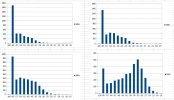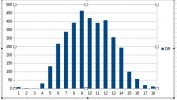jmf11
Active Member
Hello,
In a journey to better understand parameters for audio systems design and/or selection, I would appreciate to perform statistics on the music I have, I listen to:
- dynamic range,
- How low it goes (bass content),
- possibly others...
Are there tools that would allow to do that on my whole audio library?
Best regards,
JMF
In a journey to better understand parameters for audio systems design and/or selection, I would appreciate to perform statistics on the music I have, I listen to:
- dynamic range,
- How low it goes (bass content),
- possibly others...
Are there tools that would allow to do that on my whole audio library?
Best regards,
JMF


